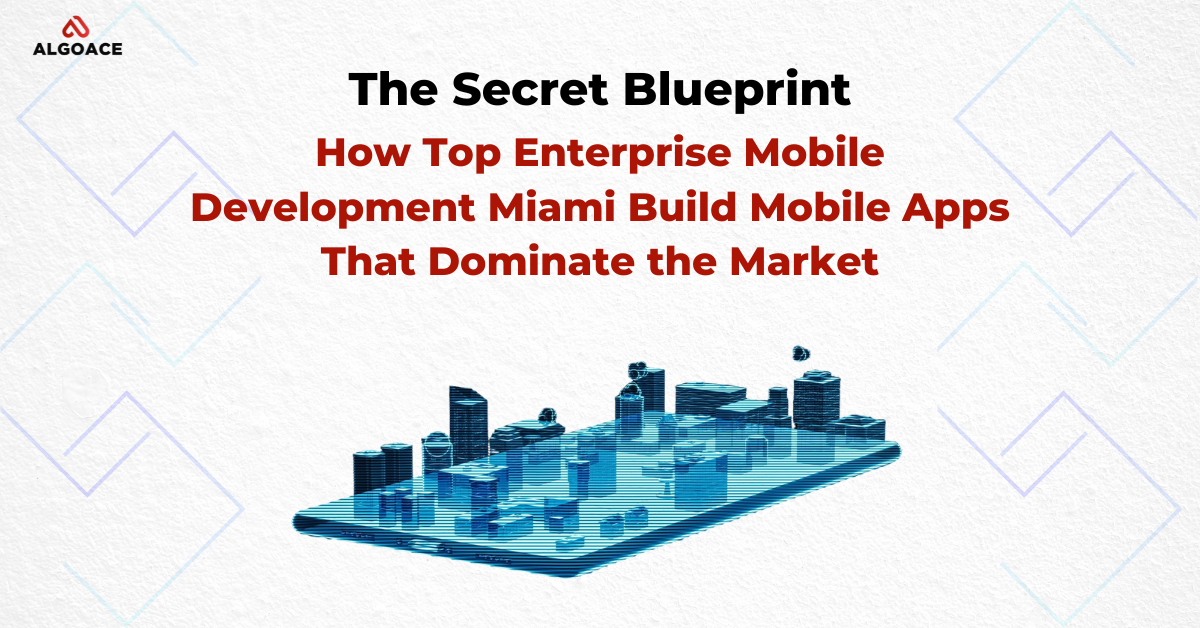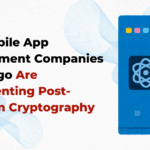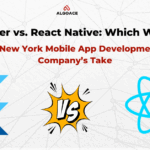
In the contemporary digital landscape, enterprise mobile applications have emerged as a fundamental element for achieving business success. However, what distinguishes leading applications from their competitors? The foremost Enterprise Mobile Development Miami adheres to a unique framework that guarantees their applications are both effective and innovative, with a strong focus on user experience.
This article will explore the methodologies employed by these industry frontrunners, ranging from the selection of technology to the enhancement of user experience, and how organizations can utilize these insights to drive their success.
The Core Principles of Enterprise Mobile Development in Miami
Miami has emerged as a thriving technology center characterized by a distinctive blend of startups and well-established companies. Enterprises in this region demand mobile applications that are not only scalable and secure but also seamlessly integrated with their current systems.
Why Choose Miami for Enterprise Mobile Development?
- Strategic Positioning – A crucial entry point to Latin America, accompanied by a swiftly expanding technology ecosystem.
- Talent Accessibility – An extensive array of proficient developers, UX designers, and IT specialists. Pro-Business
- Regulations – Favorable policies and tax benefits designed to support technology enterprises.
Step 1: Research & Strategy – Building a Solid Foundation
Prior to the development of a mobile application, software development companies located in Miami engaged in comprehensive research to guarantee a successful outcome.
Market Research & Competitive Analysis
Gaining insights into the target audience, prevailing market trends, and competitive landscape is essential for formulating a strategic plan for the app development process. Native App Developers Houston leverage these insights to create high-performing, user-centric applications.
Defining Objectives & Key Performance Indicators (KPIs)
Establishing explicit objectives guarantees consistency with organizational goals. Frequently utilized key performance indicators (KPIs) encompass:
- User Engagement (Daily Active Users, Retention Rate)
- Performance Metrics (Load Time, Crash Reports)
- Revenue Targets (In-App Purchases, Advertising Revenue).
Step 2: Choosing the Right Tech Stack
Choosing the appropriate technology is essential for ensuring scalability, security, and optimal performance.
Native vs. Cross-Platform Development
- Native applications, developed using Swift for iOS and Kotlin for Android, deliver superior performance and a smooth user experience.
- Cross-platform frameworks such as Flutter and React Native facilitate quicker development and enhance cost-effectiveness.
Backend Development & Cloud Integration
Leading enterprise developers in Miami depend on strong backend solutions such as AWS, Firebase, and Microsoft Azure to guarantee both reliability and scalability.
Step 3: UI/UX Design – Crafting an Intuitive Experience
The user experience plays a vital role in the success of applications. Developers in Miami adhere to these best practices:
Principles of Effective UI/UX Design
- Minimalist Interface – A design that is clean, straightforward, and captivating.
- Responsive Design – Guarantees seamless functionality on all devices.
- Accessibility – Features that comply with ADA standards to reach a wider audience.
Prototyping & User Testing
Miami’s leading companies engage in iterative testing to enhance UI/UX by utilizing authentic user feedback.
Step 4: Security & Compliance – Safeguarding Enterprise Data
Common Security Threats in Enterprise Mobile Apps
- Data Breaches – Unauthorized access to confidential information.
- API Vulnerabilities – Insufficient API security may result in data exposure.
- Malware Attacks – Threats from the injection of harmful code.
Best Practices for Enterprise Mobile Security
- End-to-End Encryption – Safeguards data throughout its transmission.
- Two-Factor Authentication (2FA) – Introduces an additional layer of security.
- Regular Security Audits – Detects weaknesses and enhances protective measures.
Step 5: Testing & Quality Assurance (QA)
Thorough testing guarantees an optimal user experience and a flawless application.
Types of Mobile App Testing
- Functional Testing – Verifies that features operate as designed.
- Performance Testing – Evaluates speed and load handling capabilities.
- Security Testing – Detects possible vulnerabilities.
Automation vs. Manual Testing
Miami developers utilize a blend of manual and automated testing tools, such as Selenium and Appium, to ensure effective quality assurance.
Case Studies: Miami-Based Enterprise Mobile Apps That Excel
Discover real-world success narratives of enterprise mobile applications based in Miami that have revolutionized various industries. These case studies emphasize creative solutions, obstacles surmounted, and quantifiable effects on business performance by South Florida App Developers.
Case Study 1: Fintech App by a Leading Miami Software Company
- The client faced the challenge of requiring a secure mobile banking application.
- To address this, we integrated AI-driven fraud detection mechanisms alongside biometric authentication features.
- As a result, there was a 30% rise in user adoption within six months.
Case Study 2: Healthcare App Revolutionizing Patient Care
- Issue: Suboptimal management of patient records.
- Resolution: Created an AI-powered application featuring real-time data synchronization.
- Outcomes: Achieved a 40% decrease in administrative costs.
Pros & Cons of Enterprise Mobile Development in Miami
| Pros | Cons |
|---|---|
| Access to top tech talent | High competition |
| Favorable business climate | Initial development costs |
| Rapid market growth | Compliance challenges |
FAQs
How long does it take to develop an enterprise mobile app?
Development typically requires a timeframe of 3 to 9 months, contingent upon the complexity of the project.
What is the cost of enterprise mobile development in Miami?
Miami presents a talented labor pool, reduced expenses, and a prime location conducive to international business growth.
Why should I choose a Miami-based software development company?
Expenses vary between $50,000 and $500,000, influenced by the specific features and technology involved.
Conclusion
Creating a successful enterprise mobile application necessitates a well-planned strategy that encompasses market analysis, technology choices, user interface, and experience design, as well as security measures. Companies specializing in Enterprise Mobile Development in Miami thrive by utilizing exceptional talent, cutting-edge frameworks, and a comprehensive grasp of user requirements.
If you aim to develop a distinctive mobile application, consider collaborating with a premier software development companies based in Miami. For expert guidance, reach out to us today and embark on your path to digital achievement.





 Welcome to Algoace!
Welcome to Algoace!
0 Comments